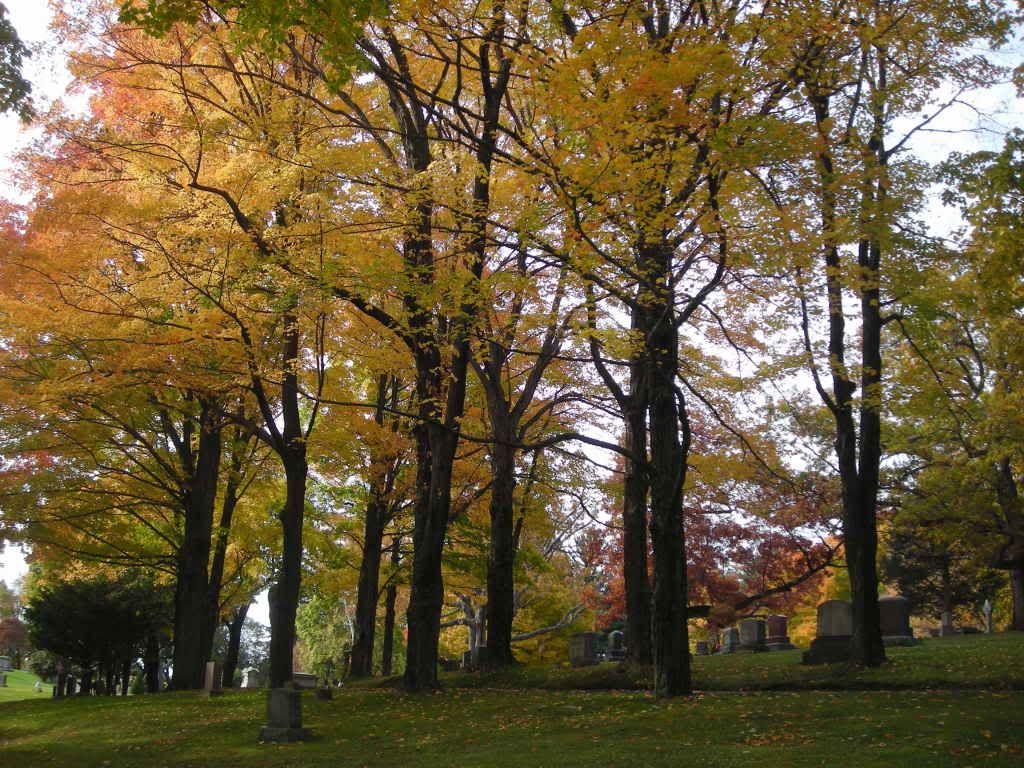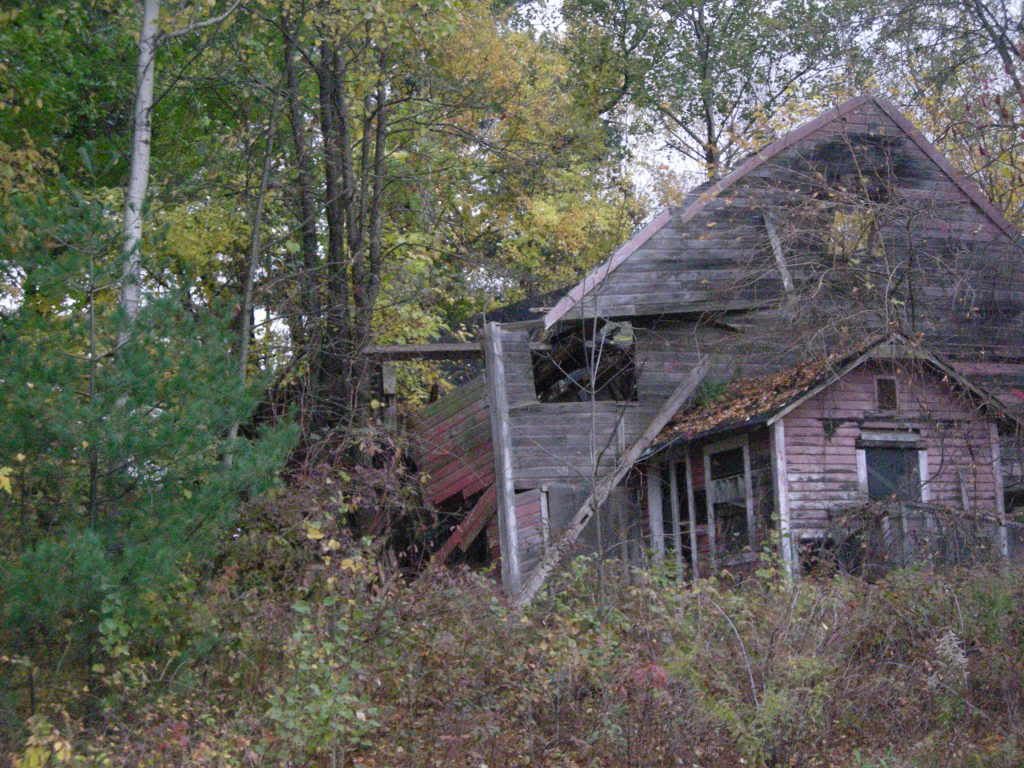Posts are made by tools like me
There are hikes you can take in New England--and I take far too few of them--where you can climb one of the many rolling hills and low peaks and bare granite crags of the ancient glacially-scrubbed foothills and look out over expanses of foliage only modestly interrupted by the intrusions of civilization. In October, this stretches out in red and yellow and matte evergreen, and there's no better time of the year to breathe: woodsmoke wafts from some distant chimney, the fallen leaves rustle up healthy earth scents not yet given over to chill or rank decay. It's strange that the season of dying can be so life-affirming, but so it goes. We value the moments most as the last of them tick so rapidly away. Autumn is the nostalgic time of year. The soft-focus light is less a function of the angle, after all, but a function of the leaves, with the chlorophyll dropping its job of corralling the yellows (as well of the blues), the deep green shade of summer is lost, and the skeletal gray shadows of winter are staved off for another couple weeks. The color of autumn is sepia.
The beauty of trees is a function of the elevation of the observer. Get a high enough view, a couple thousand feet up one of the taller local peaks maybe, or even out the window as you glide in towards Logan Airport, and the tree cover brings out a sense of rural serenity. It covers up the byways and the front yards, and from above, suburbia could be mistaken for a forest, cut through (depending on your view) with the occasional well-groomed highway or parking expanse, with rooftops and fields emerging tastefully from the canopy here and there. It's a different impression from treetop level. If you're on one of those lower outcrops, or if the roadway swerves into one of those scenic overlooks where the landscape stretches out in front of you, you can see the trees blanket the geography like a bumpy ocean of polyps, an endless tray of bloated past-due fruit that can be grabbed and crushed in your fist in pustulent bursts. At this time of year, these sudden vistas are the seasonal glamor shots, and they're nice for their color and expanse, but it's not my favorite perspective. It reminds me too much of a mold colony viewed under a microscope. It reminds me that there's nothing special about the shape and the color of the things, just another example of a million self-similar natural structures, unique only because they're slightly bigger than people and most of the stuff we build. I like the trees best when viewed from below, filtering down yellow light. The walk up is the best view of the hill, as the as the branches loom and sway over you in majestic expanse, and you trudge leaf-blown paths and trip over gnarled old roots.
The forests aren't very old in New England, maybe a hundred years, most of 'em. That's enough to grow some species of trees for a solid lifespan or two, but it's still hard to go hiking and find anything like old growth. They're not the same forests that once teemed with chestnut and elm, that the pre-industrial white settlers thoroughly hacked down to clear farms and heat a couple centuries worth of homes. Nor are they the same woods that the Algonquin speakers still had to respect. People have been part of this nook of the biosphere for at least 30,000 years, and the warm chapter in the climatological novel has been developing over more or less the same time, and different plant species thrive or die under different conditions. The forests were in flux enough without chainsaws and imported Asian fungi, but probably at nothing like this rate. 
You don't see too many elder trees around in the woods, no trunks that have grown stabilizing feet at their base, no wind-tortured branches, no rotted-out boles for ghosts to hide in. The remaining ancient members are all loners, allowed to survive near the earlier homes and churches, as docile and as assimilated as old house servants, watching, twisted and benevolent, over people's front yards, scarred into submission with decades of grooming.
The biggest malpractice of tree surgery is along roadsides, to accommodate power lines. We're so used to seeing telephone poles, but they're nasty, ugly things, and to me, they look like relics out of 19th century urban photographs. Along some roadsides, they're noticable for their absence, and it's comforting to me when the hardwoods get the opportunity to stretch their arms over the pavement and meet hands in the middle. It adds drama when these arboreal tunnels are allowed to open up, and then swallow the traveler again. There's mystery around every corner.
It's tempting to universalize the experience of the New England autumns, disregarding untold generations of people feeling out their souls in every niche of climatic and civilizational diversity. No doubt they feel their own seasonal quickenings. But the fall makes me happy to live here.

7 comments:
Beautiful post Keifus. I feel refreshed.
'The Forest ' by Edward Rutherford gave me a great dose of timber/trees and the forest as a sweeping reality and historical metaphor.(Just as you mentioned the pruning of the American Indian from the forests as the forests themselves made way for farms and property).
It was part of his series on England..but this one really was all about forest/trees and land rights re the English class system, property demarcating the haves and the have less..
Your writing is smooth as butter.
Thank you.
A
Thanks, glad you liked it.
I was reading up a little bit, about the forest that Thoreau had holed up in. It was a pretty tame (and had a railroad running along it), used as a woodlot. Walden pond wasn't much more than tiny refuge from the sprawl back then either. Went on about how the dutch elm disease, the chestnut blight, and a hurricane in the early twentieth century pretty well finished off what little the agrarian age had left standing. The zero point for New England reforestation was 1920 or so.
Then I found myself reading about King Philip's war. Not nice.
The English class system stands up well in terms of historical iniquity. But I've got to say, that the naturalist, preservational aesthetic wasn't so bad.
(And for all my blather, I spent the weekend inside, plumbing, while my wife raked leaves.)
i too, love autumn up here. it's a shame the chestnuts and elms aren't coming back. though there are people working on the chestnuts. still, the relative youth of this reforestation gives us plenty of birches, and i do like those.
i'm not sure what the stats for the rest of new england are, but i suspect they are similar to CT since the removal of most agriculture west-ward: from about 70% clear-cut to 70% forested. fairly impressive, when you think bout it. give nature two or three of our generations and our footsteps are all but erased. other than stone fences, but those add to the charm. nor do rocks much care where they wind up. i think they enjoy the travel, slow as it may be.
Yeah, I guess the chestnuts still spring up and contract the disease at some early stage of maturity. My mother used to be convinced that one of these sorts of not-dead specimens in her cousin's yard was the key to it all.
The trees are coming back niceley here, and yeah, it's comforting. (If farming ever gets somewhat re-distrubited back to communities, do they get cut down again? Probably.)
great post i found you some how looking for things on our sons birth defects esophageal atresia. I wish you the best and god bless
What an awesome post. I've had the same feeling about telephone poles. I suspect that a hundred years from now (assuming there's still some sort of civilization then) those poles will be gone. And the trees can join hands again.
Kayla: I'm ecstatic that someone stumbled across my crappy blog and enjoyed one of my too-rare posts. The feeling is tempered by the spectre of surgery on a baby. Good luck.
Arch: No shit, huh? And I wonder what the alternative is? Getting them at human level opens them up for vandalism and horrible accidents (but surely it would make electricians' jobs safer--a friend of the family is now dead from a ladder fall on the job). Getting them underground, and the trees are still a problem for the invasive roots (and yet sewers work, and so do urban power lines).
Innocently enough, the telephone poles completely fuck up the landscape. Maybe microwave transmission or some other space-age magic is the answer.
Post a Comment